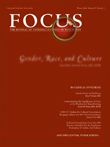Toward a Comprehensive Developmental Model for Major Depression in Women
Abstract
Objective: Major depression is a multifactorial disorder with many etiologic variables that are interrelated through developmental pathways. The authors used structural equation modeling to generate a developmental model for the etiology of major depression in women. Method: Data from 1,942 adult female twins, interviewed up to four times over a 9-year period, were used to construct a developmental model to predict depressive episodes in the year before the most recent interview. Eighteen risk factors in five developmental tiers were considered: 1) childhood (genetic risk, disturbed family environment, childhood sexual abuse, and childhood parental loss), 2) early adolescence (neuroticism, self-esteem, and early-onset anxiety and conduct disorder), 3) late adolescence (educational attainment, lifetime traumas, social support, and substance misuse), 4) adulthood (history of divorce and past history of major depression), and 5) the last year (marital problems, difficulties, and stressful life events). Results: The best fitting model included six correlations and 64 paths, provided an excellent fit to the data, and explained 52% of the variance in liability to episodes of major depression. The findings suggest that the development of risk for major depression in women results from three broad pathways reflecting internalizing symptoms, externalizing symptoms, and psychosocial adversity. Conclusions: Major depression is an etiologically complex disorder, the full understanding of which will require consideration of a broad array of risk factors from multiple domains. These results, while plausible, should be treated with caution because of problems with causal inference, retrospective recall bias, and the limitations of a purely additive statistical model.



